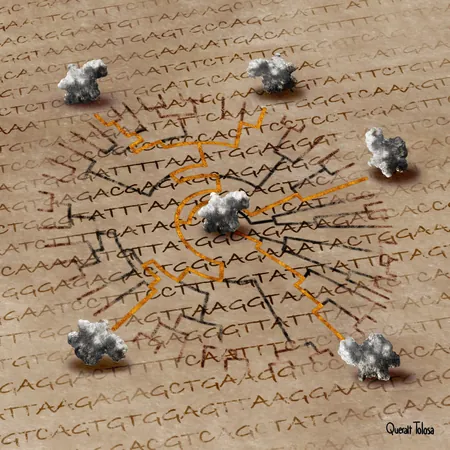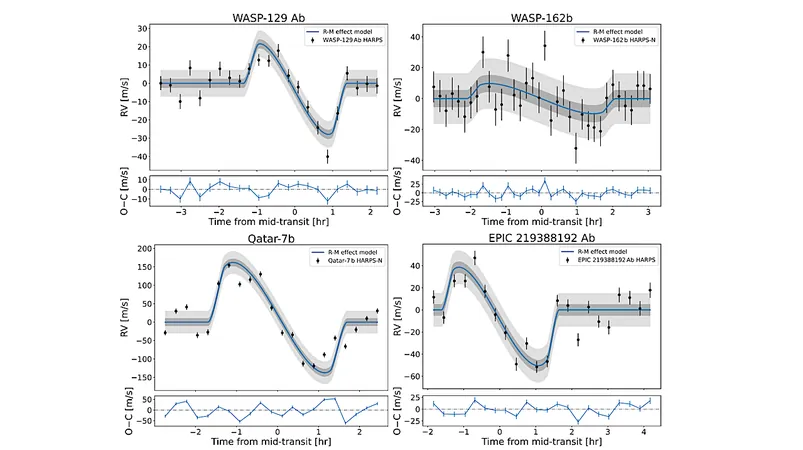
Unlocking the Past: How 3D Protein Shapes Can Revolutionize Our Understanding of Evolution
2025-01-15
Author: John Tan
In a groundbreaking study published in *Nature Communications*, researchers have unveiled that the three-dimensional (3D) shapes of proteins can play a pivotal role in deciphering ancient evolutionary connections in the tree of life. This innovative approach combines data from protein shapes with genomic sequences, significantly enhancing the accuracy of evolutionary trees. Such trees are essential resources for scientists investigating the course of life on Earth, tracking the spread of pathogens, and developing new medical treatments.
Historically, biologists have utilized genomic data to trace the genetic divergences between species. However, they have faced formidable challenges, particularly the problem of saturation, where genetic sequences undergo extensive changes over millions of years, obscuring ancestral connections. Dr. Cedric Notredame, a researcher at the Center for Genomic Regulation and the study’s lead author, likens this phenomenon to a worn-out manuscript where the original message becomes indistinguishable over time.
To tackle this issue, the research team shifted their focus to the physical structures of proteins. Unlike sequences, which may mutate drastically, the intricate shapes of proteins tend to remain stable over evolutionary timescales. This retention of structural integrity provides a clearer window into evolutionary history. The researchers measured intra-molecular distances (IMDs) between amino acids to assess how protein structures evolve over time.
Using a comprehensive dataset of proteins from a variety of species with known structures, the researchers constructed phylogenetic trees based on structural data. Astonishingly, these models closely matched those derived from genetic sequences, but with a paramount advantage: they were less influenced by the problem of saturation. This remarkable finding means that structural phylogenetic trees can maintain reliable evolutionary signals even as genetic sequences diverge extensively.
Emphasizing the significance of this dual approach, Dr. Leila Mansouri, a co-author of the study, stated, “It’s akin to having two witnesses describe an event from different angles. Each provides unique details, but together they give a fuller, more accurate account.” This combined methodology not only bolsters the reliability of evolutionary trees but also aids in distinguishing correct relationships from errors.
A pertinent application of this cutting-edge technique lies in analyzing the relationships between kinases—proteins crucial for numerous biological functions. Dr. Notredame highlights that the human genome contains about 500 protein kinases that regulate key biological processes and are prime targets for cancer therapies, such as imatinib and toceranib. Given that kinases have evolved through duplications over the last billion years, reconstructing their evolutionary lineage poses significant challenges, highlighting the importance of this study’s findings.
The implications of this research extend far beyond cancer treatment. Enhanced evolutionary trees could provide deeper insights into the emergence of diseases, guiding vaccine and treatment development. Furthermore, they can illuminate the origins of complex traits, facilitate the discovery of novel enzymes useful in biotechnology, and aid in tracking species adaptation to climate change.
As protein research advances with the help of tools like AlphaFold 2, which predicts protein structures, scientists are on the brink of an unprecedented era of exploration into the intricate web of life on Earth. This study not only sets the stage for the future of evolutionary biology but also holds the promise of significant benefits for human health and understanding our biosphere.
Why wait? Dive into the fascinating world of protein evolution and discover how this revolutionary method could change everything we thought we knew about life's intricate interconnections!



 Brasil (PT)
Brasil (PT)
 Canada (EN)
Canada (EN)
 Chile (ES)
Chile (ES)
 Česko (CS)
Česko (CS)
 대한민국 (KO)
대한민국 (KO)
 España (ES)
España (ES)
 France (FR)
France (FR)
 Hong Kong (EN)
Hong Kong (EN)
 Italia (IT)
Italia (IT)
 日本 (JA)
日本 (JA)
 Magyarország (HU)
Magyarország (HU)
 Norge (NO)
Norge (NO)
 Polska (PL)
Polska (PL)
 Schweiz (DE)
Schweiz (DE)
 Singapore (EN)
Singapore (EN)
 Sverige (SV)
Sverige (SV)
 Suomi (FI)
Suomi (FI)
 Türkiye (TR)
Türkiye (TR)
 الإمارات العربية المتحدة (AR)
الإمارات العربية المتحدة (AR)